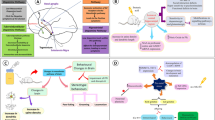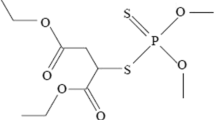Abstract
This research aimed to assess the effect of perillyl alcohol (PA) on convulsive behavior in vivo using adult zebrafish (Danio rerio, both sexes). The seizures were induced with pentylenetetrazole (PTZ) intraperitoneally at 170 mg/kg, and diazepam (DZP) was used as the control anticonvulsant (2 mg/kg, oral); PA was tested at 10, 50, and 100 mg/kg orally. The groups had ten animals per group (total n = 60), observed for 10 minutes after seizure induction. We manually appraised typical seizure phenotypes for quantification and used an animal tracking software (Toxtrac) to assess the motor parameters. Next, we sought to find a mechanism of action for PA anticonvulsant activity in silico using a structure-based activity prediction server and molecular docking. The results show that PTZ induced seizure-like behavior in all untreated animals with hyperlocomotion episodes, seizure itself, posture loss, and immobility. DZP inhibited the seizures in all animals of the positive control group. PA, in turn, inhibited the occurrence of seizures in a dose-dependent manner, with frequencies of 90%, 70%, and 40% (for 10, 50, and 100 mg/kg, respectively). The PA treatments also decreased several seizure endpoints in a dose-dependent manner. Also, the difference of the group treated with highest dose of PA was statistically significant compared with the negative control group for all the endpoints assessed (p < 0.05, Kruskal-Wallis). The in silico analyses suggested that PA can affect the GABAergic system, which might be involved in its anticonvulsant activity, but other mechanisms cannot be ruled out. Overall, our results suggest an anticonvulsant potential in perillyl alcohol.





Similar content being viewed by others
Abbreviations
- CNS:
-
Central nervous system
- DNA:
-
Deoxyribonucleic acid
- DZP:
-
Diazepam
- GABA-AT:
-
Gamma aminobutyric acid
- mTOR:
-
Mammalian target of rapamycin
- PA:
-
Perillyl alcohol
- PTZ:
-
Pentylenetetrazole
- ROS:
-
Reactive oxygen species
- Toxtrac:
-
animal tracking software
References
Afrikanova T, Serruys ASK, Buenafe OEM, Clinckers R, Smolders I, de Witte PAM, Crawford AD, Esguerra CV (2013) Validation of the zebrafish pentylenetetrazol seizure model: locomotor versus electrographic responses to antiepileptic drugs. PLoS One 8:1–9. https://doi.org/10.1371/journal.pone.0054166
Ambrogini P, Torquato P, Bartolini D, Albertini MC, Lattanzi D, Di Palma M, Marinelli R, Betti M, Minelli A, Cuppini R, Galli F (2019) Excitotoxicity, neuroinflammation and oxidant stress as molecular bases of epileptogenesis and epilepsy-derived neurodegeneration: the role of vitamin E. Biochim Biophys Acta - Mol Basis Dis. #pagerange#. https://doi.org/10.1016/j.bbadis.2019.01.026
Anis E, Zafeer MF, Firdaus F, Islam SN, Fatima M, Mobarak Hossain M (2018) Evaluation of phytomedicinal potential of perillyl alcohol in an in vitro Parkinson’s Disease model. Drug Dev Res 79:218–224. https://doi.org/10.1002/ddr.21436
Banote RK, Koutarapu S, Chennubhotla KS, Chatti K, Kulkarni P (2013) Oral gabapentin suppresses pentylenetetrazole-induced seizure-like behavior and cephalic field potential in adult zebrafish. Epilepsy Behav 27:212–219. https://doi.org/10.1016/j.yebeh.2013.01.018
Baraban SC, Taylor MR, Castro PA, Baier H (2005) Pentylenetetrazole induced changes in zebrafish behavior, neural activity and c-fos expression. Neuroscience 131:759–768. https://doi.org/10.1016/j.neuroscience.2004.11.031
Barbalho PG, Carvalho B d S, Lopes-Cendes I, Maurer-Morelli CV (2016) Cyclooxygenase-1 as a potential therapeutic target for seizure suppression: Evidences from zebrafish pentylenetetrazole-seizure model. Front Neurol 7. https://doi.org/10.3389/fneur.2016.00200
Benedito RB, Alves MF, Pereira WB, de Arruda Torres P, Costa JP, da Rocha Tomé A, de Cássia da Silveira e Sá R, de Sousa DP, Ferreira PMP, de Freitas RM, de Fatima F, Melo Diniz M, de Almeida RN (2019) Perillyl alcohol: antinociceptive effects and histopathological analysis in rodent brains. Nat Prod Commun 12:1934578X1701200. https://doi.org/10.1177/1934578x1701200902
Berchtold CM, Chen KS, Miyamoto S, Gould MN (2005) Perillyl alcohol inhibits a calcium-dependent constitutive nuclear factor-κB pathway. Cancer Res 65:8558–8566. https://doi.org/10.1158/0008-5472.CAN-04-4072
Borham LE, Mahfoz AM, Ibrahim IAA, Shahzad N, ALrefai AA, Labib AA, Bin Sef B, Alshareef A, Khan M, Milibary A, Al Ghamdi S (2016) The effect of some immunomodulatory and anti-inflammatory drugs on Li-pilocarpine-induced epileptic disorders in Wistar rats. Brain Res 1648:418–424. https://doi.org/10.1016/j.brainres.2016.07.046
Chen TC, da Fonseca CO, Schönthal AH (2018) Intranasal perillyl alcohol for glioma therapy: Molecular mechanisms and clinical development. Int J Mol Sci 19:1–21. https://doi.org/10.3390/ijms19123905
Cole JC, Murray CW, Nissink JWM, Taylor RD, Taylor R (2005) Comparing protein-ligand docking programs is difficult. Proteins Struct Funct Genet 60:325–332. https://doi.org/10.1002/prot.20497
Collymore C, Rasmussen S, Tolwani RJ (2013) Gavaging adult zebrafish. J Vis Exp 1–5. https://doi.org/10.3791/50691
d’Alessio PA, Bisson J-F, Béné MC (2013) Anti-stress effects of d-limonene and its metabolite perillyl alcohol. Rejuvenation Res 17:145–149. https://doi.org/10.1089/rej.2013.1515
Desmond D, Kyzar E, Gaikwad S, Green J, Riehl R, Roth A, Stewart AM, Kalueff AV (2012) Assessing epilepsy-related behavioral phenotypes in adult zebrafish. Chemosphere:313–322. https://doi.org/10.1007/978-1-61779-597-8_24
Du X, Li Y, Xia YL, Ai SM, Liang J, Sang P, Ji XL, Liu SQ (2016) Insights into protein–ligand interactions: Mechanisms, models, and methods. Int J Mol Sci 17:1–34. https://doi.org/10.3390/ijms17020144
Duy PQ, Berberoglu MA, Beattie CE, Hall CW (2017) Cellular responses to recurrent pentylenetetrazole-induced seizures in the adult zebrafish brain. Neuroscience 349:118–127. https://doi.org/10.1016/j.neuroscience.2017.02.032
Filimonov DA, Lagunin AA, Gloriozova TA, Rudik AV, Druzhilovskii DS, Pogodin PV, Poroikov VV (2014) Prediction of the biological activity spectra of organic compounds using the pass online web resource. Chem Heterocycl Compd 50:444–457. https://doi.org/10.1007/s10593-014-1496-1
Froimowitz M (1993) HyperChem: a software package for computational chemistry and molecular modeling. Biotechniques.
Golyala A, Kwan P (2017) Drug development for refractory epilepsy: tpast 25 years and beyond. Seizure 44:147–156. https://doi.org/10.1016/j.seizure.2016.11.022
Gomes AC, Mello AL, Ribeiro MG, Garcia DG, Da Fonseca CO, Salazar MD, Schönthal AH, Quirico-Santos T (2017) Perillyl alcohol, a pleiotropic natural compound suitable for brain tumor therapy, targets free radicals. Arch Immunol Ther Exp (Warsz) 65:285–297. https://doi.org/10.1007/s00005-017-0459-5
Han H, Mann A, Ekstein D, Eyal S (2017) Breaking bad: the structure and function of the blood-brain barrier in epilepsy. AAPS J 19:973–988. https://doi.org/10.1208/s12248-017-0096-2
Jia M, Njapo SAN, Rastogi V, Hedna VS (2015) Taming glutamate excitotoxicity: Strategic pathway modulation for neuroprotection. CNS Drugs 29:153–162. https://doi.org/10.1007/s40263-015-0225-3
Jin M, He Q, Zhang S, Cui Y, Han L, Liu K (2018) Gastrodin suppresses pentylenetetrazole-induced seizures progression by modulating oxidative stress in zebrafish. Neurochem Res 43:904–917. https://doi.org/10.1007/s11064-018-2496-9
Jones G, Willett P, Glen RC, Leach AR, Taylor R (1997) Development and validation of a genetic algorithm for flexible docking. J Mol Biol 267:727–748. https://doi.org/10.1006/jmbi.1996.0897
Kalueff AV, Gebhardt M, Stewart AM, Cachat JM, Brimmer M, Chawla JS, Craddock C, Kyzar EJ, Roth A, Landsman S, Gaikwad S, Robinson K, Baatrup E, Tierney K, Shamchuk A, Norton W, Miller N, Nicolson T, Braubach O, Gilman CP, Pittman J, Rosemberg DB, Gerlai R, Echevarria D, Lamb E, Neuhauss SCF, Weng W, Bally-Cuif L, Schneider, the Zebrafish Neuros, H (2013) Towards a comprehensive catalog of zebrafish behavior 1.0 and beyond. Zebrafish 10:70–86. https://doi.org/10.1089/zeb.2012.0861
Kinkel MD, Eames SC, Philipson LH, Prince VE (2010) Intraperitoneal injectioninto adult zebrafish. J Vis Exp 3–6. https://doi.org/10.3791/2126
Kriz J, Župan G, Simonić A (2003) Differential effects of dihydropyridine calcium channel blockers in kainic acid-induced experimental seizures in rats. Epilepsy Res 52:215–225. https://doi.org/10.1016/S0920-1211(02)00213-9
Kundap UP, Kumari Y, Othman I, Shaikh MF (2017) Zebrafish as a model for epilepsy-induced cognitive dysfunction : a pharmacological, biochemical and behavioral approach. Front Pharmacol 8:1–13. https://doi.org/10.3389/fphar.2017.00515
MacRae CA, Peterson RT (2015) Zebrafish as tools for drug discovery. Nat Rev Drug Discov 14:721–731. https://doi.org/10.1038/nrd4627
Menezes FP, Da Silva RS (2017) The influence of temperature on adult zebrafish sensitivity to pentylenetetrazole. Epilepsy Res 135:14–18. https://doi.org/10.1016/j.eplepsyres.2017.05.009
Mussulini BHM, Leite CE, Zenki KC, Moro L, Baggio S, Rico EP, Rosemberg DB, Dias RD, Souza TM, Calcagnotto ME, Campos MM, Battastini AM, de Oliveira DL (2013) Seizures induced by pentylenetetrazole in the adult zebrafish: a detailed behavioral characterization. PLoS One 8:1–9. https://doi.org/10.1371/journal.pone.0054515
O'Brien Z (2004) Pharmacokinetics, in vitro absorption and metabolism of perillyl alcohol, a chemopreventive and chemotherapeutic agent. (Electronic Thesis or Dissertation). Retrieved from https://etd.ohiolink.edu/
Pauletti A, Terrone G, Shekh-Ahmad T, Salamone A, Ravizza T, Rizzi M, Pastore A, Pascente R, Liang LP, Villa BR, Balosso S, Abramov AY, Van Vliet EA, Del Giudice E, Aronica E, Antoine DJ, Patel M, Walker MC, Vezzani A (2017) Targeting oxidative stress improves disease outcomes in a rat model of acquired epilepsy. Brain 140:1885–1899. https://doi.org/10.1093/brain/awx117
Perucca P, Gilliam FG (2012) Adverse effects of antiepileptic drugs. Lancet Neurol 11:792–802. https://doi.org/10.1016/S1474-4422(12)70153-9
Pineda R, Beattie CE, Hall CW (2011) Recording the adult zebrafish cerebral field potential during pentylenetetrazole seizures. J Neurosci Methods 200:20–28. https://doi.org/10.1016/j.jneumeth.2011.06.001
Rodriguez A, Zhang H, Klaminder J, Brodin T, Andersson PL, Andersson M (2018) ToxTrac: a fast and robust software for tracking organisms. Methods Ecol Evol 9:460–464. https://doi.org/10.1111/2041-210X.12874
Sankaraneni R, Lachhwani D (2015) Antiepileptic drugs-a review. Pediatr Ann 44:e36–e42. https://doi.org/10.3928/00904481-20150203-10
Scheffer IE, Berkovic S, Capovilla G, Connolly MB, French J, Guilhoto L, Hirsch E, Jain S, Mathern GW, Moshé SL, Nordli DR, Perucca E, Tomson T, Wiebe S, Zhang YH, Zuberi SM (2017) ILAE classification of the epilepsies: Position paper of the ILAE Commission for Classification and Terminology. Epilepsia 58:512–521. https://doi.org/10.1111/epi.13709
Singh A, Trevick S (2016) The epidemiology of global epilepsy. Neurol Clin 34:837–847. https://doi.org/10.1016/j.ncl.2016.06.015
Stewart AM, Braubach O, Spitsbergen J, Gerlai R, Kalueff AV (2014) Zebrafish models for translational neuroscience research : from tank to bedside. Trends Neurosci 37:264–278. https://doi.org/10.1016/j.tins.2014.02.011
Stewart AM, Desmond D, Kyzar E, Gaikwad S, Roth A, Riehl R, Collins C, Monnig L, Green J, Kalueff AV (2012) Perspectives of zebrafish models of epilepsy : What , how and where next ? Brain Res Bull 87:135–143. https://doi.org/10.1016/j.brainresbull.2011.11.020
Stewart AM, Gaikwad S, Kyzar E, Kalueff AV (2012) Understanding spatio-temporal strategies of adult zebrafish exploration in the open field test. Brain Res 1451:44–52. https://doi.org/10.1016/j.brainres.2012.02.064
Sundin T, Peffley DM, Hentosh P (2013) Disruption of an hTERT-mTOR-RAPTOR protein complex by a phytochemical perillyl alcohol and rapamycin. Mol Cell Biochem 375:97–104. https://doi.org/10.1007/s11010-012-1532-3
Tabassum R, Vaibhav K, Shrivastava P, Khan A, Ahmed ME, Ashafaq M, Khan MB, Islam F, Safhi MM, Islam F (2015) Perillyl alcohol improves functional and histological outcomes against ischemia–reperfusion injury by attenuation of oxidative stress and repression of COX-2, NOS-2 and NF-κB in middle cerebral artery occlusion rats. Eur J Pharmacol 747:190–199. https://doi.org/10.1016/j.ejphar.2014.09.015
Temp FR, Marafiga JR, Milanesi LH, Duarte T, Rambo LM, Pillat MM, Mello CF (2017) Cyclooxygenase-2 inhibitors differentially attenuate pentylenetetrazol-induced seizures and increase of pro- and anti-inflammatory cytokine levels in the cerebral cortex and hippocampus of mice. Eur J Pharmacol 810:15–25. https://doi.org/10.1016/j.ejphar.2017.05.013
Wilson JM, Bunte RM, Carty AJ (2009) Evaluation of rapid cooling and tricaine methanesulfonate (MS222) as methods of euthanasia in zebrafish (Danio rerio). J Am Assoc Lab Anim Sci 48:785–789
Zhou W, Fukumoto S, Yokogoshi H (2009) Components of lemon essential oil attenuate dementia induced by scopolamine. Nutr Neurosci 12:57–64. https://doi.org/10.1179/147683009x388832
Funding
This study was financed in part by the Coordenação de Aperfeiçoamento de Pessoal de Nível Superior—Brazil (CAPES). Process Number 88882.430015/2019-2019-01 and 88887.478228/2020-00.
Author information
Authors and Affiliations
Contributions
ACMP designed the study, performed the in vivo experiments, was one of the blind evaluators of manual assessment of seizure behavior, performed the software-assisted automated video analysis, analyzed the results, and wrote the manuscript. BLSO, ELM, and RSB helped with the in vivo experiments and were the other blind evaluators. LIDSHM performed the in silico experiments and analysis. XU and JCTC was the supervisor of the project.
Corresponding author
Ethics declarations
Conflict of interest
The authors declare that they have no conflict of interest.
Additional information
Publisher’s note
Springer Nature remains neutral with regard to jurisdictional claims in published maps and institutional affiliations.
Rights and permissions
About this article
Cite this article
Matias Pereira, A.C., Sánchez-Ortíz, B.L., de Melo, E.L. et al. Perillyl alcohol decreases the frequency and severity of convulsive-like behavior in the adult zebrafish model of acute seizures. Naunyn-Schmiedeberg's Arch Pharmacol 394, 1177–1190 (2021). https://doi.org/10.1007/s00210-021-02050-0
Received:
Accepted:
Published:
Issue Date:
DOI: https://doi.org/10.1007/s00210-021-02050-0




